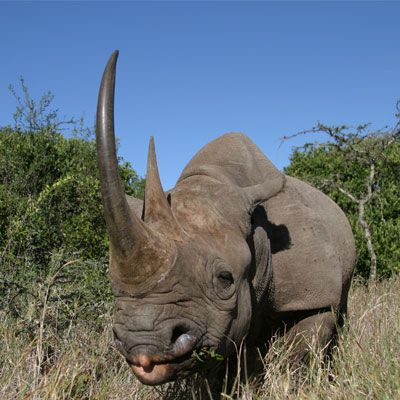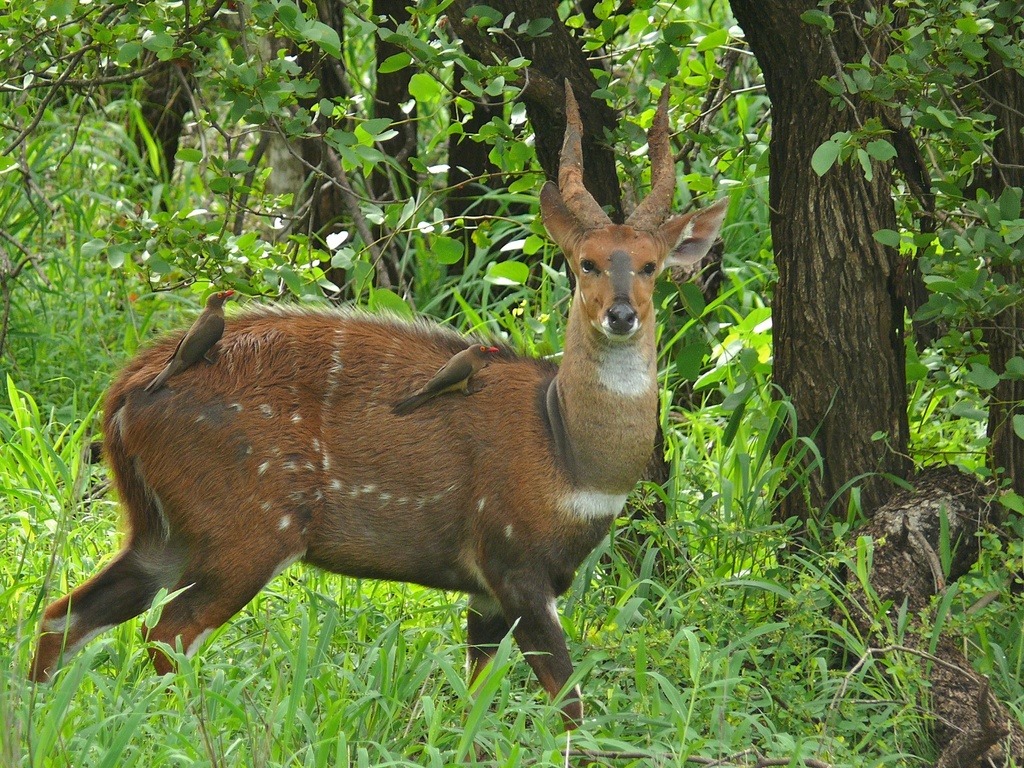The story of the Rhinoceros
#KeWildlife – Story 5
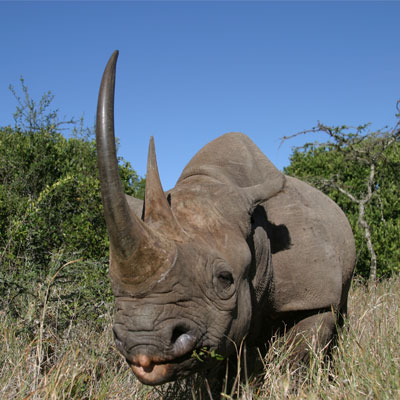
Allow us to use your mind for a moment.
You are on a safari. The sun sets in the horizon and the red and orange colours have permitted the sky to look like an artist’s masterpiece. In the distance, right by a lone Acacia tree is a black-grey large animal standing silently. The wind rustles the leaves above its head and in that moment, there is complete serenity.
Wonderful, wasn’t it?
Standing at 170cm and weighing approximately 1,400 kgs, it’s no wonder the Black Rhino is one of our most outstanding animals. Having coined the term ‘Rhinoceros’ from the Greek word ‘Rhino’ to mean ‘nose’ and ‘ceros’ meaning ‘horns’, this large mammal is probably most unique for its facial features. The black rhino has two horns; one that sit above its mouth and the other between its ears.
But let’s go back to this animal’s weight – black rhinos run on their toes, which essentially goes to show their ability to carry a lot of mass. Even more interesting is the fact that a rhino can charge at 55kph if it senses something that leaves it uncomfortable. That’s a powerful tackle!
There are five types of rhino and the black rhino is the third largest of the bunch. Furthermore, the black rhino is actually a shade of dark grey and not black as its name suggests. One thing we’re certain of is that its exact colour can be spotted better up close but keep the thought that these mammals have excellent hearing but horrible eyesight, so if you aren’t careful, you could be past tense in a matter of seconds.
The black rhino’s lifespan averages between 30 and 50 years. These rhinos aren’t known to be as proactive as scavengers but they do love a good dose of plant nutrients and can eat up to 220 plant species throughout their life. They’re most commonly found eating branches, shoots and sometimes the plant’s fruit.
Kenya’s oldest black rhino, Solio, died at 42 of old age at the Lewa Wildlife Conservancy. She is definitely a rhino to remember because she was one of the few that didn’t fall to poaching. Speaking of poaching, Kenya’s black rhinos are critically endangered! Poachers are often after their horns that are then shipped to other countries where there is the common belief that they can cure certain illness. Needless to say, the hunger to claim these horns has resulted in a major population decline throughout Africa, and it is upon us to rally with the organizations such as Save The Rhino International to save this animal.
Back to the sunset we took your mind to earlier.... need to see that in real life? Black rhinos at Aberdare National Park, Tsavo East National Park and Ol Pejeta Conservancy.
The story of the Nile Crocodile
Story 4
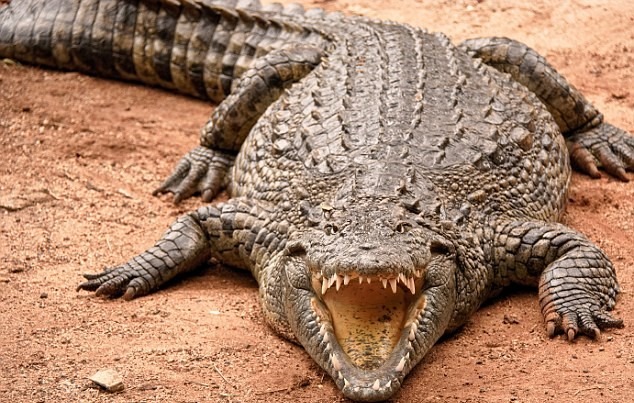
A long time ago on a riverbank by a forest, a monkey and a crocodile formed a great friendship. The monkey would visit the crocodile often and when she came, she would bring plenty of fruit from the forest for the crocodile to eat. In turn, the crocodile would bring the monkey the largest fish he could find from the depths of the river. He would also take his friend on rides along the river where other crocodiles wouldn’t be spotted for most crocodiles loved to eat other animals.
And their friendship continued to grow.
One day Mr. Croc, as he was called, met a female crocodile, and the two instantly fell in love for no male crocodile can live alone. As they talked, Mr. Croc told his lady about his monkey friend and the kind gestures they’d show each other. Little did Mr. Croc know that his lady was a very greedy crocodile who wanted to eat the monkey because she’d heard that monkeys taste delicious.
After supper one evening she devised a plan to get Mr. Croc to bring her his monkey friend.
“My dearest, do you love me?” she asked.
“Of course I do,” he replied. “I have never met anyone as beautiful as you!”
“But you know I could be more beautiful,” she said.
“Yes. And with each day your beauty grows.”
“Thank you, but I could be more beautiful in an instant. You know what can make that happen?”
“Tell me my dear,” responded Mr. Croc.
“The heart of a monkey. Will you get me a monkey’s heart to enhance my beauty?”
“I would but I don’t know where to get one.”
“How about your friend who brings you fruits from the forest?”
“But he’s my friend, I wouldn’t do that.”
Mr. Croc’s lady sulked and cried all night until eventually he agreed to bring her his friend’s heart.
The following morning, he swam to the river bank with a serious face. When the monkey saw him, she was elated but noticed that her friend wasn’t in a good mood.
“What’s wrong Mr. Crocodile?” she asked.
“Nothing. Let’s go for a ride.”
The monkey hopped on Mr. Crocodile’s back and off they went. When she realized that they were swimming further into the river, she asked Mr. Croc why he was taking her so far. He told her the truth and she responded, “Why didn’t you tell me earlier that you wanted my heart? I keep it behind a tree at the edge of the river bank. We can go back and get it if your lady really wants it.”
At that, Mr. Croc was so excited, he took the monkey back to the riverbank. When they arrived, the monkey jumped off and turned to him.
“My heart is not here,” she said, “And I am angry at you for wanting to let your lady kill me. We are no longer friends.”
Mr. Croc swam away, sad that he had lost a friend and was about to disappoint his lady.
*
While the story teaches a lesson or two about boundaries, we could also note that it’s rare to find such a friendship in the reality of the animal kingdom.
In Kenya we have the Nile Crocodile; one of three African crocodiles. This species is the largest freshwater predator and is among the world’s most deadly predators. This amphibian is also known to eat other crocodiles that are in its path and is further reputed as a man eater.
Want to see Nile crocodiles and examine their scales even closer? We wouldn’t advise you to tread near them, but you can find them at Central Island National Park in Turkana and at the Sibiloi National Park.
The story of the Bushbuck
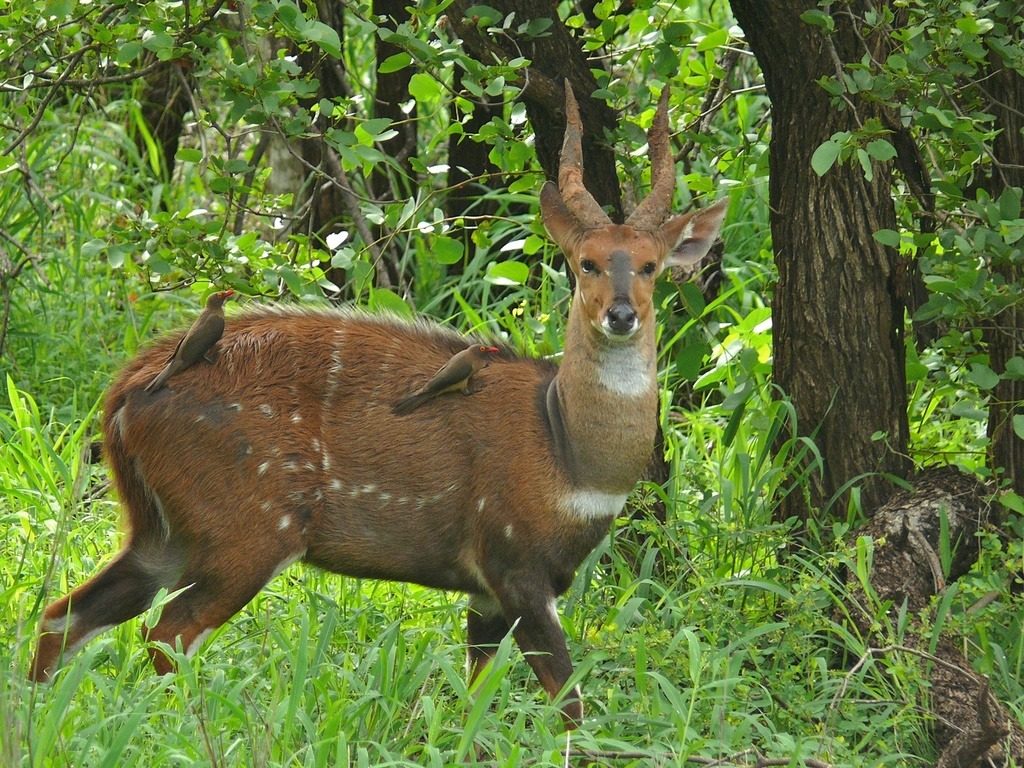
Have you ever heard of the antelope species Tragelaphus scriptus? Or lets throw down a bigger challenge...can you say Tragelaphus scriptus?!
With dark brown fur the male Bushbuck exudes confidence. The female Bushback on the other hand boasts of a lighter brown coat, but shares one aspect of her outward appearance with her male counterpart; they have white dots along their sides that tread in no specific pattern. If colour isn’t the easiest way for an observer to identify the gender of this African mammal, perhaps the male Bushback’s horns provide more clarity. All in all, this mammal is a beatiful sight to behold!
Also called the Imbabala, from the Bovidae family we have to agree that Bushback is a more matter of fact if not really cool name. The name is also synonymous with the animal’s whereabouts – the bush. Did you know this antelope species can only be found in Kenya and 11 other African states? Goes to show that we are indeed a land of hidden gems in form of wildlife.
If you’re looking to spot a Bushback on a safari, you need to keep a keen eye out because these animals are known for their shy nature and they tend to make good use of thickets and within forests. Naturally nocturnal, these animals are known to take advantage of the darkness when they are least likely to be disturbed. In the nightime however, they roam freely and even close in on human settlements which we believe is their way of playing hide and seek with us.
But what’s most striking about this mammal is its solitary nature. Nature’s true introvert.. Bushbacks do not move around in pairs or as herds. For this reason, male and female Bushbacks only come together for the purpose of reproduction and thereafter go their separate ways after a few hours. If the female does get pregnant, the gestation period lasts approximately six months and when her calf is born, she goes to great lengths to ensure its safety against predators by cleaning and hiding it. Although it isn’t known when mother and calf go separate ways, the Bushback’s overall lifespan estimates to 12 years.
Looking to spot this #KeWildlife on a future safari? They can be found at The Aberdare National Park, Ol Donyo Sabuk National Park, Chyulu Hills National Park and Mount Kenya National Park.

